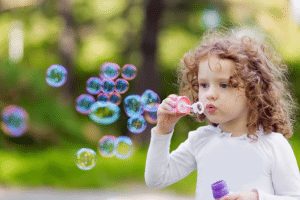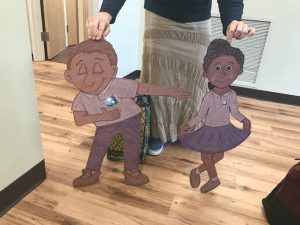Montessori Theory in Action: How the Bead Stair Builds Math Confidence
In Montessori classrooms, children don’t memorize math facts–they experience them. Through carefully designed materials like the Bead Stair, students begin to understand numbers as quantities they can see, touch, and move. This approach, rooted in Montessori theory, transforms abstract math into something concrete and empowering.
Montessori materials like the Bead Stair are more than learning tools. They are confidence builders, setting the foundation for joyful, meaningful engagement with math from the earliest years.
What Is the Montessori Bead Stair?
The Bead Stair is a foundational math material found in Montessori Primary classrooms. It consists of colored bead bars representing numbers one through nine. Each number is associated with a unique color, allowing young learners to connect visually and physically with quantity. This color-coding becomes part of a larger Montessori theory system that spans the entire math curriculum, from counting to multiplication and beyond.
Children use the Bead Stair to:
- Count objects in sequence
- Build number bonds
- Practice linear addition
- Begin memorizing math facts through pattern recognition
It’s not just about what they learn, but how they learn it: with their hands, eyes, and mind working together.
Why Hands-On Math Matters
In conventional classrooms, math often starts with symbols: “2 + 3 = 5.” But for preschool-aged children, symbols without substance can feel confusing or arbitrary.
Montessori theory turns this on its head. It begins with tangible experiences. Children see and feel what “two” and “three” actually are before ever writing numerals.
This approach aligns with research on early math development. According to the National Association for the Education of Young Children (NAEYC), hands-on math activities are essential in early childhood. They help children build number sense, spatial awareness, and a love of problem-solving, all key predictors of later academic success.
The Bead Stair introduces math as a creative, exploratory process, not a series of drills or rote memorization.
How the Bead Stair Builds Confidence
Young children thrive on repetition and mastery. The Bead Stair provides both.
- Repetition: Children revisit the material over and over, arranging and rearranging the beads to reinforce concepts.
- Independence: The design is self-correcting, meaning children can check their own work without waiting for a teacher.
- Mastery: As they progress, students use the Bead Stair in increasingly advanced ways—comparing quantities, building teen numbers, and combining beads to form addition facts.
This process mirrors the Montessori theory belief that confidence comes not from praise, but from competence.
When a child builds the number 7 using a five-bar and a two-bar, they aren’t just learning math. They’re learning that they can solve problems, notice patterns, and figure things out on their own.
How MKU Uses the Bead Stair Across Ages
The Bead Stair is introduced in the Primary classroom (ages 3–6), but its influence stretches throughout the curriculum. Here’s how we scaffold the experience:
- Early Primary (ages 3–4): Children explore the bead bars in isolation, learning color associations and quantity.
- Mid-Primary (ages 4–5): Students begin to order the bars and match them with numerals or sandpaper numbers.
- Later Primary (ages 5–6): They begin building number bonds, solving addition problems, and exploring the decimal system using the same bead materials.
Because the materials are consistent, children can revisit them with increasing depth. The Bead Stair grows with them.
Montessori Theory and the Bead Stair: A Perfect Match
Maria Montessori believed that the mind is built through the hands. Materials like the Bead Stair reflect this principle perfectly. They are:
- Concrete: Representing real quantities
- Purposeful: Designed for repetition and independence
- Beautiful: Inviting to the child, carefully crafted for attention
More than a math tool, the Bead Stair embodies the broader Montessori theory of development. It honors a child’s natural curiosity, respects their pace, and builds internal motivation.
As Montessori wrote, “The hands are the instruments of man’s intelligence.” The Bead Stair proves this true every day in MKU classrooms.
Learning Through Movement and Discovery
In addition to fine motor development, the Bead Stair supports:
- Visual sequencing (essential for math and reading)
- Color discrimination (a pre-reading skill)
- One-to-one correspondence (a key kindergarten readiness metric)
This kind of multi-sensory learning aligns with brain development science. Early experiences literally shape the brain’s architecture. By offering math that is active, inviting, and real, MKU lays strong foundations for future learning.
Linking Math to the Real World
MKU teachers intentionally connect the Bead Stair to daily life. Children:
- Count snacks during group time
- Match quantities while setting the lunch table
- Compare bead bars to blocks, utensils, or leaves
Math becomes a lens for seeing the world. And because it began with joyful work, children feel capable rather than anxious when faced with new math challenges.
That’s the long-term value of the Montessori theory in action: children who believe they are capable of learning anything, because they’ve experienced it firsthand.
Ready to See Montessori Math in Motion?
Scheduling a tour of your local Montessori Kids Universe is the best way to witness the full Montessori approach in action. You’ll see children choosing work with focus, engaging with math naturally, and building the kind of confidence that lasts far beyond preschool.


